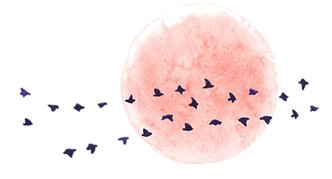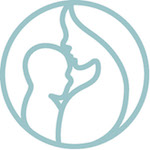Craniosacral Therapy (CST)
Positive Body Awareness
Andrew Cook MSc RCST
Transformational Bodywork
Positive Body Awareness
Andrew Cook MSc RCST
Transformational Bodywork
 Techniques
Techniques
...the body has an intelligence of its own...
I have been studying and practicing complementary therapies now since 1987 and Craniosacral Therapy (CST) since 1994. That length of experience means that I have also picked up quite a lot of knowledge along the way. My outlook on life is also one of exploration, and so I'm always curious about what I am practicing, and how it works. So, in addition to the formal training I have received - I have adopted, adapted and developed CST, following my general philosophy of Wellness. Hence the title "Transformational Bodywork".
99% of my practice can be (somewhat artificially) divided into the following major technique categories :
-
Craniosacral Therapy (CST)
CST is a hands-on ("bodywork") method of treatment, and constitutes well over 90% of my work. "Cranio" refers to the head, and "Sacral" is the other end of the spine. Although CST includes a lot of techniques for working with the head, the face and the spine, it applies to the whole body. I apply the full spectrum of CST techniques, from very physical work on fascia and lymph through to Biodynamic approaches. All of them have great value in their proper context.
Although it is fashionable to think that there is one kind of treatment that deals with one kind of pathology, CST comes from exactly the opposite direction. For example, very often quite general, non-specific interventions can have a profound effect in unexpected ways. To provide just one example, it is well recognised in CST that release of compression of the base of the skull/top of the neck (the AO) is one of the most useful health interventions it is possible to make. This 2013 study shows evidence for AO decompression helping both physiological heart function and mental-emotional stability. -
Structural alignment through proper engagement with the feet
... is a current passion, which will eventually be outlined in a video, and perhaps later a small handbook. Because we rely on shoes (and do not walk barefoot), most people have underdeveloped deep muscles in their feet and lower legs. This has negative consequences for the stability of the lower back, the structure and postural alignment of the whole body (including the jaw) - and on psychological issues such as confidence. Proper engagement of the feet and point of balance with the ground also removes about half the upper body weight from the lower (lumbar) spine, and so is particularly important in reversing disk compression and rupture. -
Dialoguing
... can sometimes be surprisingly important part of bodywork!
I studied Somato-Emotional Release™ with the Upledger Institute in the 1990's, including an advanced course in Santa Fe, New Mexico USA. And some 10 years later trained with the SensoriMotor Psychotherapy Institute. I have created my own particular fusion of these techniques, with a strong emphasis on the Polyvagal theory of Stephen Porges. These verbal/dialoguing teachiques are not psychotherapy. Rather, they provide a means to help you be aware of your body in specific ways - which can then have a very powerful and beneficial effect on your physiology and on how the physical tissues move and respond to treatment. -
Positive Body Awareness (PBA)
... is a form of dialoguing that has become an important part of my treatments. Although CST is really good at helping people to relax, sometimes it is important to be awake to make the best use of a treatment session! The principle of PBA is to increase the availability of resourced (warm, strong, alive) embodied sensations, so that we feel more safe and more in control at a very deep physiological (rather than mental) level. The use of conscious attention is an important part of this, so unfortunately, if I use this approach you'll have to be awake rather than asleep on the table. Sorry about that. Having said that, many treatment sessions do take place in silence - and I apply my experience to choose whatever will provide you with the most benefit in each session. I am also teaching PBA in general evening classes because it is such a fundamentally important life skill. -
Self-help training
I have integrated over 20 years personal experience of Qigong and Taiji, some yoga and a range of other physical movement practices with my experience practicing CST. The "foot alignment" exercises above are just one of a range of simple and safe exercises I have developed that can help you to recover in various situations. "Positive Body Awareness" is another skill that is incredibly useful as a self-help practice, and as a life skill. -
Reflexology (etc)...
I still occasionally apply reflexology (which I originally trained in in the 1980's) as part of the treatment sessions where it feels appropriate.




<< ¦ Top ¦ Menu ¦ Front page ¦ Body-Mind ¦ CST/Clinic ¦ Contact ¦ Site Map ¦ Search
all content © Andrew Cook, Norwich UK, 2021



